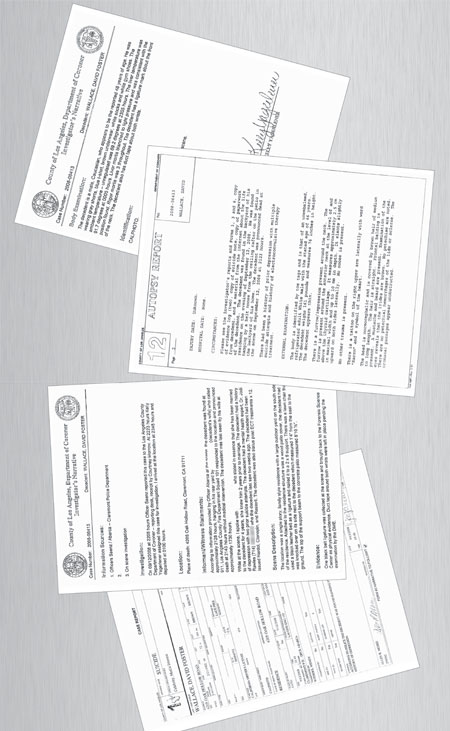david foster wallace. bizitza forentse baten autopsia
David Fosters Wallace idazleak, eskumuturrak zilar koloreko zinta itsaskorraz lotu zituen, etxeko terrazako habe batetik zintzilikatutako larruzko gerriko beltzak egiten zuen hutsune obalatuan burua sartu, eta bere burua zintzilikatu egin zuen. 46 urte zituen. Karen Green emazteak, udak udazkenari erreleboa emateko prestatzen den egun epel batean, DFW-ren hilotza habetik kulunka deskubritu zuen (1). Labanaz gerrikoa moztu zuen, eta senararren gorpua bere azken nahia betetzeko erabilitako aulkiaren albora jauzi zen. Bertan topatu zuen suizidio oharra ere (2).
Depresiorako joera eta bere buruaz beste egiteko aurreko saiakerak dagoeneko ezagunak zituzten gertukoek. Beste guztiontzat, praka bakeroak, ile luzea, eta batzuetan buruan zapia janzten zuen idazle estatubatuar garaikidea zen. Satira, ironia eta umore bereziaz (3) betetako kazetaritza-lan liluragarriak idatzi zituen, eta bere inguruko gizartearen erretratuak liburu marduletan maisuki argitaratzen zituen egile talentuduna zen.
David Fosters Wallacek AEBko gizartearen hainbat alorretako autopsiak idazten zituen. Superheroien dohain horietako bat zirudien (4). Bizitzaren argazki idatziak egiten zituen. Bizitzaren forentsea zen DFW. Arrazoi horrexegatik erabaki dugu haren bizitzaren azken une horren “literatura-atala” argitaratzea ondorengo orrialdeetan.
(1) Heriotzaren data zehatza autopsian irakur dezakezue. Irakurleak ere dedukziorako joera minimoa izan beharko luke.
(2) Suizidek ez dute zertan notarik utzi. Ez da derrigorrezkoa. Ez da hori arautzen duen legerik esistitzen. DFW-k ziurrenik, bere idazle izakerarekin koherentea izango zen azken ekintza egin behar zuela pentsatuko zuen. “Suizidaren oharra”. Genero bat beren baitan.
(3) Tristura zabaltzen dutenek munduan segitzeko gasolina berezi bat izaten dute. Uste denaren kontra, barrea eragiten dutenek egiten dute bere buruaz beste.
(4) DFW-k hamabi electroshock-sesio jasan zituen bere bizitzan. Akaso muturreko esperientzia horietan lortu zuen bere "superheroi" boterea. Medikuntzak X izpiak erabiltzen dituen moduan zerabilen bere luma DFW-k.
Depresiorako joera eta bere buruaz beste egiteko aurreko saiakerak dagoeneko ezagunak zituzten gertukoek. Beste guztiontzat, praka bakeroak, ile luzea, eta batzuetan buruan zapia janzten zuen idazle estatubatuar garaikidea zen. Satira, ironia eta umore bereziaz (3) betetako kazetaritza-lan liluragarriak idatzi zituen, eta bere inguruko gizartearen erretratuak liburu marduletan maisuki argitaratzen zituen egile talentuduna zen.
David Fosters Wallacek AEBko gizartearen hainbat alorretako autopsiak idazten zituen. Superheroien dohain horietako bat zirudien (4). Bizitzaren argazki idatziak egiten zituen. Bizitzaren forentsea zen DFW. Arrazoi horrexegatik erabaki dugu haren bizitzaren azken une horren “literatura-atala” argitaratzea ondorengo orrialdeetan.
(1) Heriotzaren data zehatza autopsian irakur dezakezue. Irakurleak ere dedukziorako joera minimoa izan beharko luke.
(2) Suizidek ez dute zertan notarik utzi. Ez da derrigorrezkoa. Ez da hori arautzen duen legerik esistitzen. DFW-k ziurrenik, bere idazle izakerarekin koherentea izango zen azken ekintza egin behar zuela pentsatuko zuen. “Suizidaren oharra”. Genero bat beren baitan.
(3) Tristura zabaltzen dutenek munduan segitzeko gasolina berezi bat izaten dute. Uste denaren kontra, barrea eragiten dutenek egiten dute bere buruaz beste.
(4) DFW-k hamabi electroshock-sesio jasan zituen bere bizitzan. Akaso muturreko esperientzia horietan lortu zuen bere "superheroi" boterea. Medikuntzak X izpiak erabiltzen dituen moduan zerabilen bere luma DFW-k.



